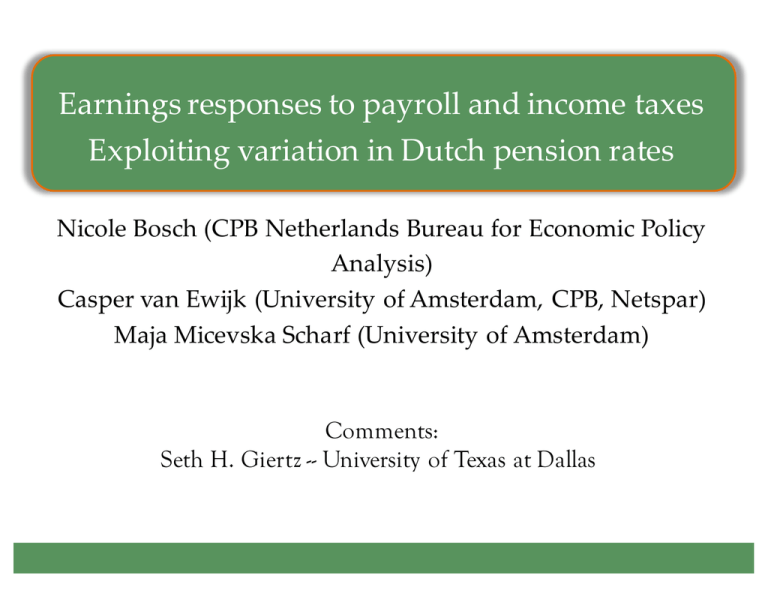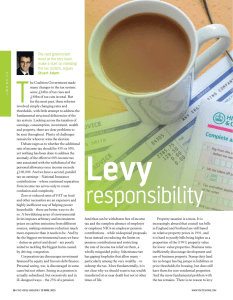Earnings responses to payroll and income taxes
advertisement

Earnings responses to payroll and income taxes Exploiting variation in Dutch pension rates Nicole Bosch (CPB Netherlands Bureau for Economic Policy Analysis) Casper van Ewijk (University of Amsterdam, CPB, Netspar) Maja Micevska Scharf (University of Amsterdam) Comments: Seth H. Giertz -- University of Texas at Dallas Hypotheses on Behavioral Responses • Why might pension rate elasticities differ from other tax elasticities? o Pension rates may be directly tied to future benefits • Information on expected rates of return could be presented o Do the plans convey a tax preference? » If so, and if actuarially fair, they may induce positive income responses for many workers o Are their redistributive elements to the plans? • Should an income effect be included for the pension component, if taxes are tied to future benefits? • One might expect private savings to decline in response to increases in pension rates (Chetty, et al., 2014) S. Giertz footer 2 Identification Strategy • Secular divergence in income trends and tax rate changes correlated with income o A problem in much of the literature (especially for the US) o Is it an issue here? Maybe not. Income and tax rate trends could be presented. o If base-year income controls are included, they should also be instrumented using lags (Weber, 2014) • Three-year differences: o Yields a combination of short- and medium-run responses (Weber, 2014) S. Giertz footer 3 Identification Strategy • Is their a good ”control” group or sector? o If so, graphs could compare income trends? Are they parallel when rates are not changing? o What is happening with general tax rates not associated with pensions? • For workers, is industry/sector selection random or a function of pension rules? S. Giertz footer 4 Pension Rate Changes & Expectations? • Most of the variation does not appear to be from one-time shifts in pension rates, but from large year-to-year fluctuations. S. Giertz footer 5 Institutional Details • How are pension rules set (for each sector)? • Administrative issues • How difficult is it to avoid these taxes? o In the US payroll taxes are difficult to avoid (without altering labor supply) – except for the self-employed • Is there heterogeneity in the ability to respond that could be exploited? S. Giertz footer 6 More Details on Key Variables • How are labour costs defined? o Is this the pre-tax wage? Or, does include fringe benefits and/or employer-provided costs? • How are hours measured? • Can structural attempts at redistribution be distinguished from incidence? o For example, are pension benefit formulae redistributive? • Can an hours equation be added to asses the margin of response? o This could also be used to assess incidence by plugging labor supply elasticity estimates into the standard incidence formula (using assumed values for the demand elasticity) S. Giertz footer 7


